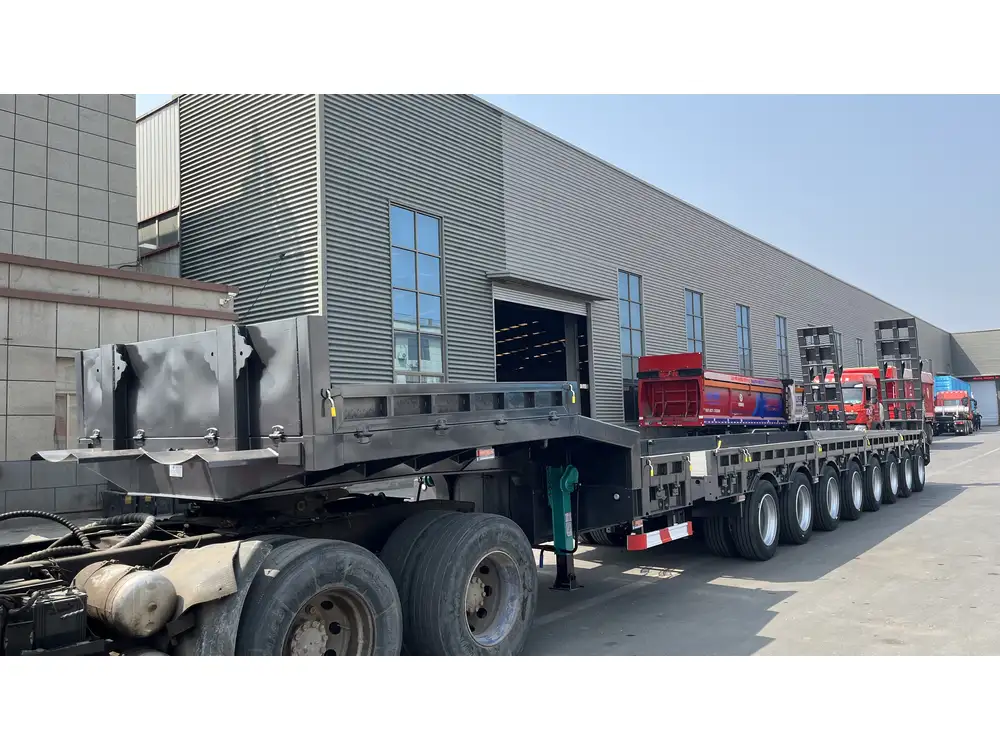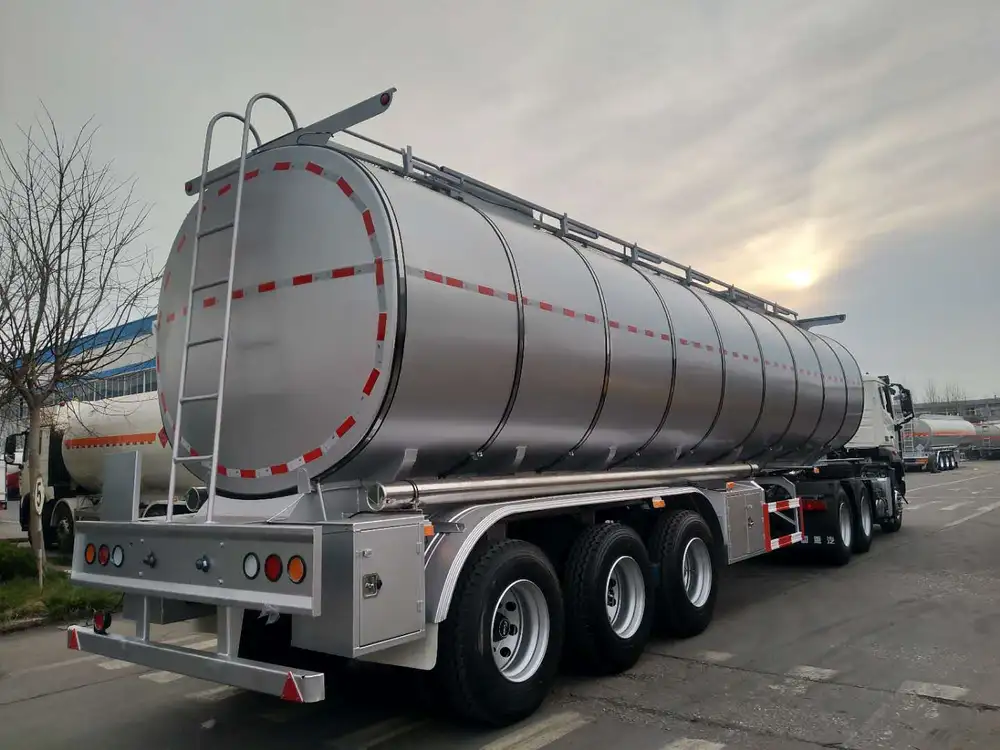Introduction to Gooseneck Skeletal Trailers
Gooseneck skeletal trailers have emerged as a vital asset in the transportation sector, especially for those engaged in the hauling of containers and large loads. These specialized trailers facilitate efficient cargo movement by utilizing a unique connection mechanism at the front, known as the gooseneck, which provides enhanced stability, better weight distribution, and more control over the load.
What is a Gooseneck Skeletal Trailer?
A gooseneck skeletal trailer is a type of semi-trailer designed specifically for transporting intermodal containers. Its structure is composed of a flatbed frame that often includes removable rails, accommodating containers of varying lengths. The gooseneck tongue, which secures to the truck’s fifth wheel coupling, is characteristic of this trailer type, allowing for greater maneuverability and stability on-road.

Key Features of Gooseneck Skeletal Trailers
| Feature | Description |
|---|---|
| Configuration | Typically designed to carry 20′, 40′, or 45′ containers. |
| Build Material | Made from high-strength steel for durability and low weight. |
| Load Capacity | Can vary widely, but often ranges from 40,000 to 50,000 lbs. |
| Removable Container Rails | Facilitate flexible loading options and customization. |
| Suspension Types | Equipped with air ride or spring suspension for comfort and stability. |
| Gooseneck Connection Point | Provides enhanced weight distribution and improves vehicle handling. |
Advantages of Gooseneck Skeletal Trailers
Gooseneck skeletal trailers offer numerous advantages that can significantly enhance your operational efficiency:
1. Enhanced Stability
The gooseneck design provides an intrinsic advantage in vehicle dynamics, ensuring improved stability during transport. This is particularly crucial when navigating through tight corners or making sudden stops, lowering the risk of accidents.

2. Versatility and Capacity
These trailers are versatile, enabling the transport of different container sizes without compromising structural integrity. The removable rails can be adjusted to specific container sizes, maximizing the trailer’s utilization. This adaptability helps in optimizing logistics and reducing costs.
3. Easy Loading and Unloading
The design of gooseneck skeletal trailers simplifies the loading and unloading process, making it quicker and more efficient. With the option of using cranes or forklifts, operators can seamlessly manage container placement without extensive manning or special equipment.
4. Weight Distribution
The position of the gooseneck is instrumental in efficient weight distribution. By distributing weight evenly across the trailer’s axles, it minimizes wear on tires and increases safety during transit.

5. Regulatory Compliance
Many regions enforce strict weight distribution regulations for trailers to ensure road safety. The gooseneck design inherently meets these requirements, making it easier for operators to comply with transport regulations.
Applications of Gooseneck Skeletal Trailers
Gooseneck skeletal trailers are used across various sectors, underlining their importance in modern logistics and transportation:
1. Intermodal Transportation
These trailers are predominantly employed in intermodal transportation, acting as a bridge between different freight transport modes. Their robustness allows for seamless transfers between ships, trains, and trucks.

2. Heavy Equipment Transport
In the construction and machinery sectors, gooseneck trailers are ideal for hauling oversized or heavy machinery, owing to their superior structural strength and stability.
3. Automotive Transport
The automotive industry frequently utilizes gooseneck skeletal trailers for the transportation of vehicles, particularly in bulk shipments where many units need to be moved simultaneously.
4. Agricultural Transport
In agriculture, these trailers may aid in transporting large farm equipment, fertilizers, or harvested goods, enhancing operational efficiencies during peak seasons.

Selecting the Right Gooseneck Skeletal Trailer
When considering the purchase of a gooseneck skeletal trailer, several factors can influence your decision:
1. Capacity Needs
Evaluate your typical load requirements. Determine the sizes and weights of the containers you will frequently transport to select a trailer that meets your demands.
2. Suspension Systems
Choose between air ride and spring suspension based on your transportation needs. Air ride suspensions offer smoother rides, beneficial for fragile cargo, while spring suspensions are suited for heavier loads.

3. Build Quality
Look for trailers constructed from high-strength materials that can withstand various loading conditions while maintaining longevity. Focus on brands with a reputation for producing durable, reliable trailers.
4. Regulatory Compliance
Ensure that the trailer complies with local, state, and federal regulations concerning weight distribution and safety features.
5. Maintenance Considerations
Select a model that offers ease of maintenance. Check for warranties and manufacturer support, so you have peace of mind about potential future issues.

Maintenance Essentials for Gooseneck Skeletal Trailers
Proper maintenance extends the life of your gooseneck skeletal trailer and ensures that it remains roadworthy and efficient:
1. Regular Inspections
Conduct frequent inspections for structural integrity, focusing on welds, connections, and the gooseneck mechanism. A thorough examination can catch wear and tear before they lead to greater issues.
2. Tire Maintenance
Check tire conditions and pressures regularly to ensure safe travels. Properly inflated tires enhance fuel efficiency and mitigate the risk of blowouts.

3. Brake Checks
Examine braking systems routinely, as they are pivotal for safety. Ensure that brakes are responsive and effectively adjusted to accommodate various load weights.
4. Lubrication of Moving Parts
Efficiently lubricate all moving parts to reduce friction and wear, which can improve lifecycle performance.
5. Cleaning
Periodically clean the trailer to remove debris and corrosive agents. This practice prevents rust and maintains the visual appeal of your asset.

Comparing Gooseneck Skeletal Trailers to Other Trailer Types
Understanding how gooseneck skeletal trailers compare to other trailer configurations can aid in making informed decisions:
| Trailer Type | Pros | Cons |
|---|---|---|
| Gooseneck Skeletal | High stability, varied capacity, easy loading | Initial cost may be higher, required hitch upgrades. |
| Flatbed Trailers | Simplicity, versatility in loading | Less stability, cargo protection is limited. |
| Enclosed Trailers | Cargo protection from elements | Heavier weight, limited loading options. |
| Lowboy Trailers | Specifically designed for heavy machinery | Limited cargo height, less maneuverability. |
Conclusion: Investing in a Gooseneck Skeletal Trailer
Choosing the right gooseneck skeletal trailer can revolutionize your logistics and transport capabilities, positioning your operations for greater efficiency and profitability. The blend of strength, adaptability, and ease of use makes these trailers a top choice for businesses eager to streamline their freight movements.
Invest wisely in your transport arsenal by evaluating the features discussed and aligning them with your unique operational needs. Whether you are in intermodal transport, heavy equipment relocation, or agricultural logistics, the gooseneck skeletal trailer is a paramount investment to enhance your competitive edge in a challenging market.
Frequently Asked Questions (FAQ)
What is the maximum weight capacity of a gooseneck skeletal trailer?
- Most variants can handle between 40,000 to 50,000 lbs, though this can vary based on design and size.
Are gooseneck trailers harder to drive compared to traditional flatbeds?
- While they require a bit more skill to maneuver due to their design, their stability often eases driving overall.
How do I properly load a gooseneck skeletal trailer?
- Ensure to distribute weight evenly and use the designated anchor points to secure the container.
How often should I inspect my trailer?
- Regular inspections are advisable before every load, with a deeper inspection every few months.
What is the lifespan of a well-maintained gooseneck skeletal trailer?
- With proper care, these trailers can last many years, often upwards of a decade.
By equipping yourself with a gooseneck skeletal trailer, you’re not just purchasing a piece of equipment—you’re investing in the future of your business’s logistics and transportation capabilities.



